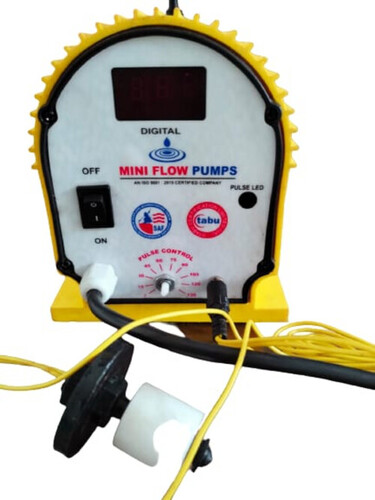Call us: 07971549709
Chlorine Dosing Systems
12000 INR/Piece
Product Details:
- Color White
- Product Type Chlorine Dosing Systems
- Usage Industrial
- Size Standard
- Material Steel
- Power Electric Watt (w)
- Pressure High Pressure PSI
- Click to View more
X
Chlorine Dosing Systems Price And Quantity
- 1 Piece
- 12000 INR/Piece
Chlorine Dosing Systems Product Specifications
- Standard
- High Pressure PSI
- Electric Watt (w)
- Chlorine Dosing Systems
- Steel
- Submersible
- Industrial
- White
Chlorine Dosing Systems Trade Information
- 100 Piece Per Month
- 10 Days
Product Description
Chlorine dosing systems are devices used to control the amount of chlorine that is added to water for the purpose of disinfection. Chlorine is a powerful disinfectant and is commonly used in water treatment to kill bacteria, viruses, and other harmful microorganisms that may be present in the water.
There are several types of chlorine dosing systems, including:
Gas Chlorination Systems: These systems use compressed chlorine gas and a regulator to control the flow of chlorine into the water. The gas is usually stored in cylinders or tanks and is fed into the system using a vacuum regulator or pump.
Liquid Chlorination Systems: These systems use liquid chlorine, usually in the form of sodium hypochlorite, to disinfect water. The chlorine is added to the water using a metering pump or injector.
Tablet Chlorination Systems: These systems use chlorine tablets that dissolve slowly in water, releasing chlorine over a period of time. The tablets are usually placed in a feeder that dissolves the tablets and adds the chlorine to the water.
Chlorine dosing systems are typically used in large-scale water treatment facilities, such as municipal water treatment plants and industrial water treatment systems. They are also used in swimming pools and spas to maintain safe and sanitary water conditions. Proper maintenance and calibration of chlorine dosing systems are important to ensure accurate and safe disinfection of water.
Tell us about your requirement

Price:
Quantity
Select Unit
- 50
- 100
- 200
- 250
- 500
- 1000+
Additional detail
Mobile number
Email

 English
English Spanish
Spanish French
French German
German Italian
Italian Chinese (Simplified)
Chinese (Simplified) Japanese
Japanese Korean
Korean Arabic
Arabic Portuguese
Portuguese






